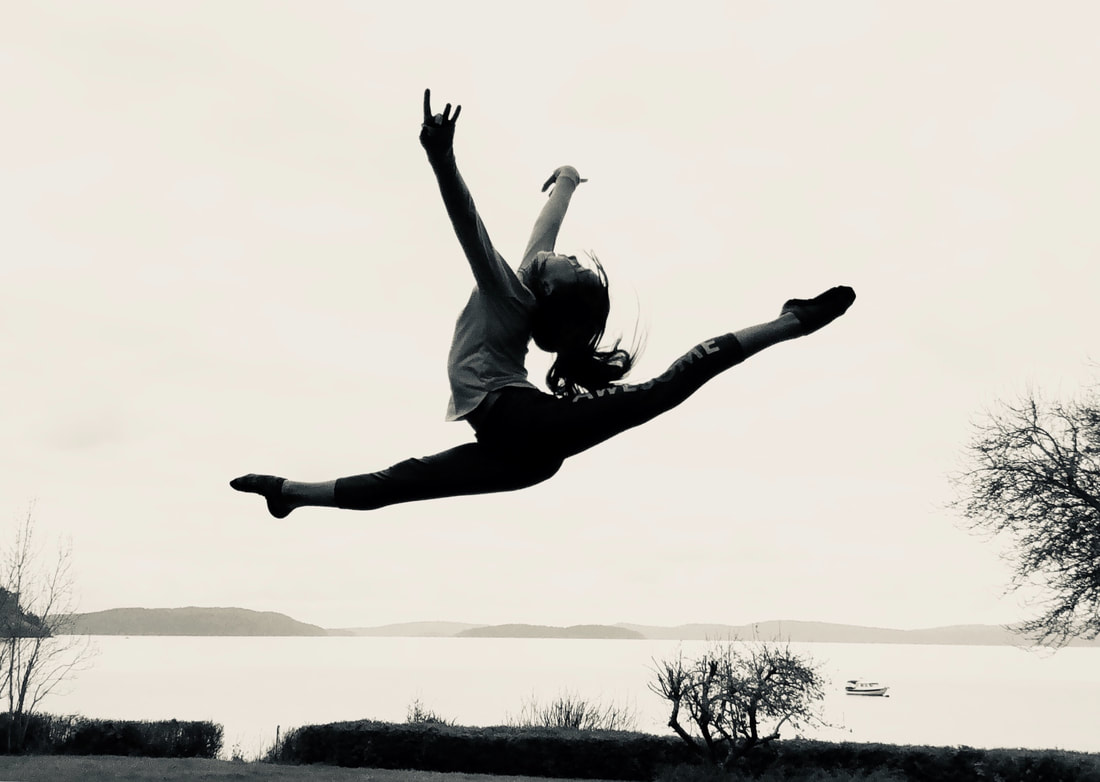|
Sometimes “Life does life and we must patiently persevere” said a friend recently. I believe this is true and I also believe that sometimes life provides us with ‘trampoline moments’
The few times I have been on a trampoline I had the feeling of being boosted (momentarily) above my life. It was a feeling of freedom from gravity. A laugh burst out---pleasure in releasing the habitual pulls of seriousness. It was a little scary too -- not knowing exactly where I would land. For me, the experience of ‘grace’ is quite similar. There are many definitions of grace most of them connected with God. This is my definition, more akin to synchronicity: A moment in time that has layers of synchronistic influence , feels like it moves me forward, has a connecting influence and helps me to feel/see the bigger picture. It is a rising up sensation I feel especially grateful for moments of grace that bounce me out of a stuck place. For example, if I am ruminating on lonlieness and unexpectedly someone reaches out. Or, I am grumping in my head about a friend and I hear a podcast that loosens my opinion of them. The important thing is to let these moments count, not to go rushing by but take note and add them up. Then I feel lucky! The feeling is the opposite of an obsessive controlling habit that grew out of my PTSD pattern. My close friends call it “the little red hen” in me. Some recent breakthroughs on changing this pattern have been: Being able to intuit what is the best intervention for my body pain (like which exercise) and then not overdoing it. Allowing myself time for pauses to actually listen rather than doing an exercise by rote. Another one was with my book efforts---sending a copy to a small bookstore in the states and then not obsessing about a response. I noticed that I quite awhile later I got an invitation from a small Canadian bookstore owner wanting to have my book in his store. As my book coach says “Be pro-active but then let go of the responsibility of ‘making it happen’ When I release the underlying fear connected with this pattern, I feel the ‘trampoline’ energy. I hope all of you have trampoline moments (or whatever reads as grace or synchronicity) in your life that enrich and calm your being.
1 Comment
Julie
9/30/2023 04:08:44 am
Hi Kristi! I love the way you used the trampoline as a metaphor for what synchronicity feels like! To me, a moment of synchronicity reassures me because it feels like every path I've chosen up to that moment has landed me in this moment, a perfect but entirely unlikely one. One I could never have orchestrated for myself.
Reply
Leave a Reply. |
AuthorKristi Magraw is known for having developed a unique synthesis of Eastern healing (Five Element theory) and Western ways of working with the mind, called the Magraw Method, which she established in 1979. This method uses metaphoric language and release techniques to help people heal physical and emotional pain. Archives
September 2023
Categories |

 RSS Feed
RSS Feed
